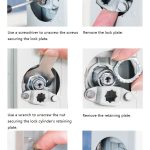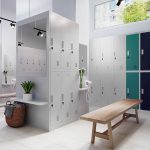When choosing steel lockers, different application environments need to consider usage requirements, environmental characteristics, and personnel flow to make a reasonable choice. Below are some key considerations for selecting steel lockers for common applications such as schools, factories, and gyms.
1. School Lockers
School lockers are mainly used for students to store clothing and personal items, so considerations should include the students' age, item storage needs, locker safety, and durability.
Key Points to Consider:
Size and Capacity: Since students generally have fewer items, the locker size does not need to be large. Standard sizes are around 180 cm high, with moderate width and depth, sufficient to store items like backpacks and jackets.
Safety: In a school environment, safety is crucial. When selecting a steel locker, ensure that the locker doors can securely lock and that the structure is robust to avoid damage or tampering by students.
Ventilation: Lockers in schools are typically located near classrooms or hallways, and the items stored may include backpacks and jackets that can accumulate odors. Choosing lockers with ventilation holes or mesh-style doors helps keep the contents dry and clean.
Color and Design: Students generally prefer bright, lively colors, so selecting steel lockers in a variety of colors can better match the school's environment.
Durability: Since lockers are frequently used by students, they need to be durable enough to withstand frequent use and occasional impacts. Choose steel lockers with scratch-resistant, anti-rust coatings to enhance their durability.
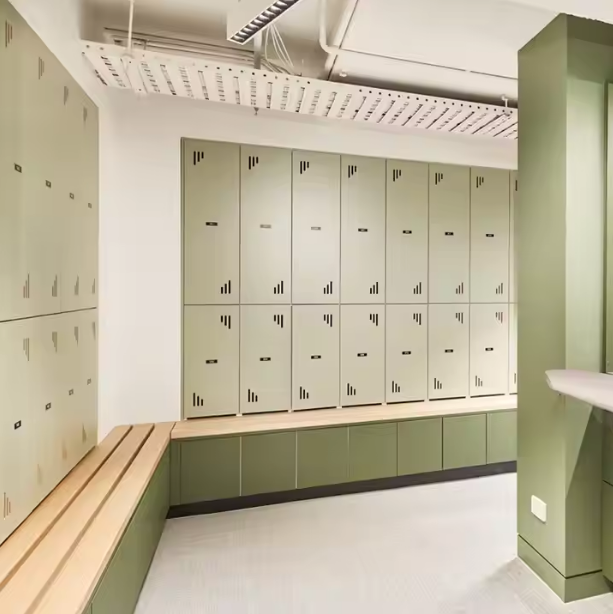
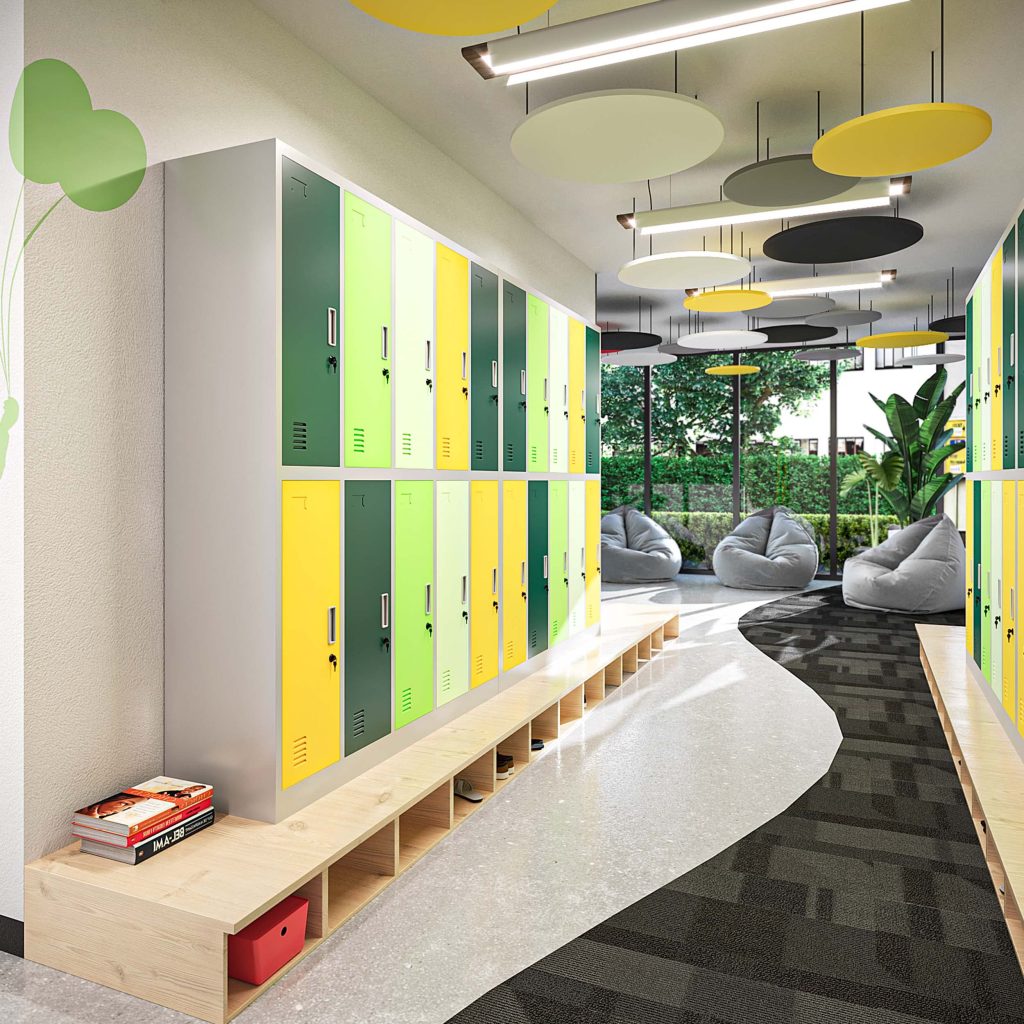
2. Gym Lockers
Gym lockers are used by fitness enthusiasts to store clothing, towels, personal items, and fitness equipment, so water resistance, moisture resistance, and ample storage space are key considerations.
Key Points to Consider:
Waterproof and Moisture Resistance: Gyms are typically high-moisture environments, so clothing and personal items are prone to getting damp. Choose steel lockers with waterproof or moisture-resistant coatings, especially for the doors and bottom parts.
Size and Functionality: Gym lockers need to offer larger storage space to accommodate items such as sports shoes, change of clothes, towels, etc. Common designs include spacious individual compartments or lockers with hooks for hanging clothes.
Ventilation Design: Since gyms have high foot traffic, and lockers often store wet clothing, it’s essential to ensure proper airflow. Lockers with ventilation holes help maintain air circulation and reduce odors.
Security and Locking Mechanisms: As gyms often store valuable items (such as phones, wallets, and fitness equipment), lockers must have secure locking mechanisms. Electronic locks or smart locks that use QR codes can provide higher security.
Durability and Cleanability: Due to frequent use, gym lockers need to be sturdy, durable, and easy to clean. Choose steel lockers with anti-scratch coatings or corrosion-resistant materials to reduce wear and tear.
3. Office Lockers
In office environments, employees need storage space for personal items such as coats, bags, and accessories. When selecting, consider the frequency of use, appearance, and storage requirements.
Key Points to Consider:
Design and Appearance: Office environments typically require a clean, minimalist design. Choose steel lockers that are simple in design and have neutral colors to match the office setting.
Space Division: Office lockers can have multiple compartments or small sections, making it easy for employees to store items like coats, bags, and umbrellas. Lockers with hangers are also suitable for storing suits or outerwear.
Security: In an office setting, employees' personal items may include valuables like electronic devices and wallets. Security is very important, so choose steel lockers with reliable locks. Smart locks that use digital codes or fingerprint recognition systems can also be considered for enhanced security.
Privacy Protection: In some offices, privacy is a concern. The locker design can include more independent partitions to ensure that employees' belongings are not easily viewed by others.

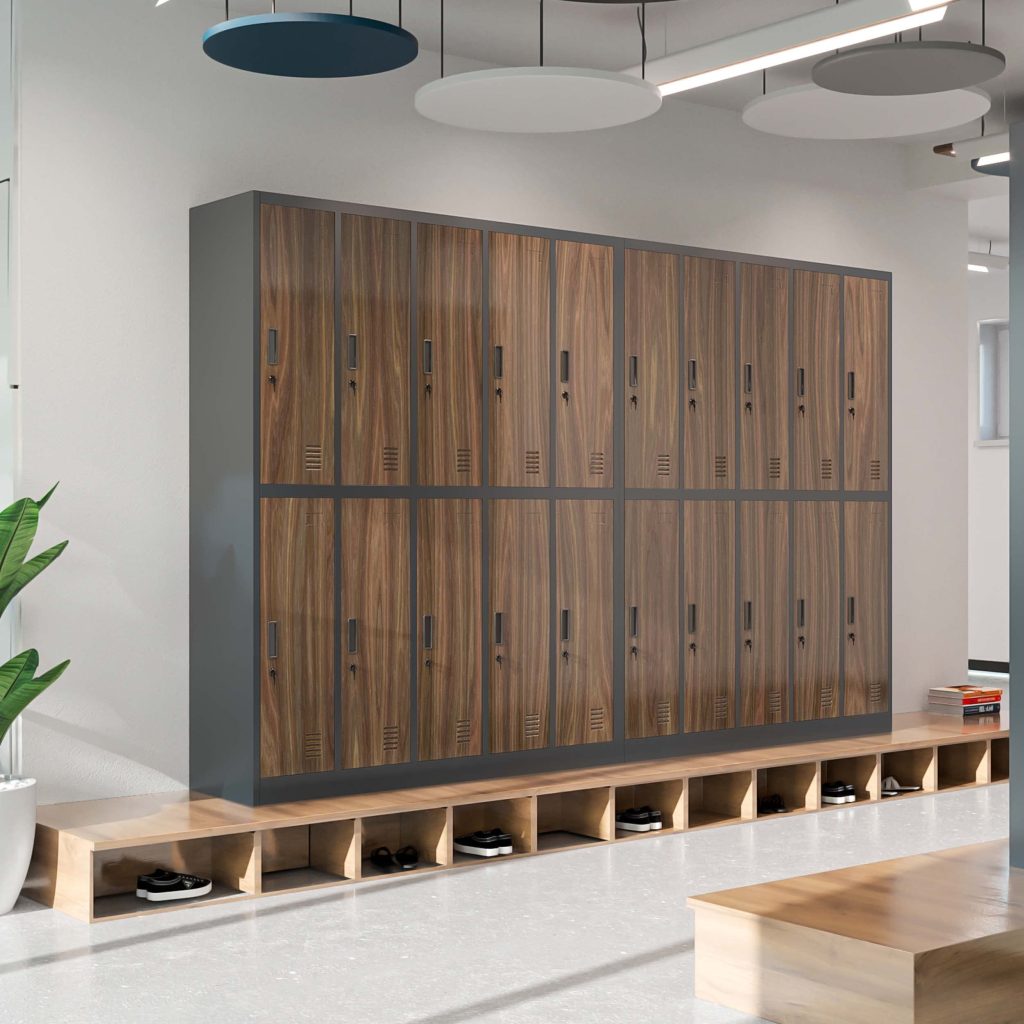
4. Swimming Pool/Water Park Lockers
Lockers in swimming pools or water parks need to withstand a high-moisture environment, so they must be waterproof, moisture-resistant, and corrosion-resistant.
Key Points to Consider:
Waterproof and Corrosion Resistance: Water parks and swimming pool environments are highly humid, so lockers need to have waterproof and corrosion-resistant coatings. This is especially important for parts of the lockers that come into contact with water.
Ventilation Design: The locker room at water parks or swimming pools often has high humidity levels. To prevent moisture and odor buildup inside lockers, it's crucial to design lockers with proper ventilation to ensure air circulation.
Security: Valuables such as phones, wallets, and other personal items need to be securely stored. Lockers should be equipped with secure locking systems, such as digital locks, smart locks, or fingerprint-based locks, to protect belongings.
5. Factory Lockers
Key Points to Consider:
Material and Durability: Choose high-strength cold-rolled steel or galvanized steel with wear resistance and corrosion protection to ensure long-term use.
Moisture-Proof and Ventilation Design: Design with ventilation holes or mesh to promote airflow, preventing moisture and odors.
Security and Locking Mechanism: Use high-quality locks (such as mechanical locks, electronic locks, or combination locks) to ensure the safety of employees' belongings.
Size and Partition Design: Select the appropriate size based on employees' storage needs, with reasonable partitions and hooks for easy organization of items.
Durability and Maintenance: Choose materials that are easy to clean and resistant to oxidation, ensuring simple maintenance and cleaning over time.
Identification and Partitioning: Design employee number areas or identification zones to facilitate management and differentiate personal items, reducing confusion.
Summary
When choosing steel lockers for different application settings, factors such as size, capacity, material, durability, safety, ventilation, and aesthetics should be carefully considered. By selecting the right design and material based on the environment, user needs, and usage frequency, you can ensure a positive locker experience and guarantee long-term stability and security.


